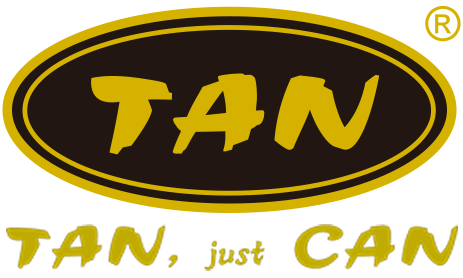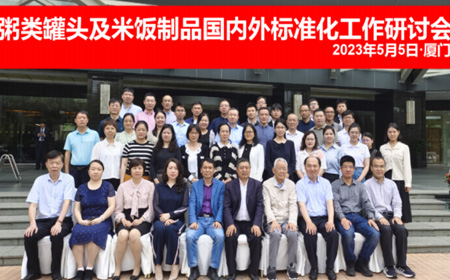In the bustling aisles of grocery stores, canned food products vie for consumers' attention with colorful labels and enticing promises. However, behind the vibrant designs lies a strategic art form known as canned food labeling. In this blog post, we'll delve into the intricacies of canned food labeling, exploring how manufacturers use this tool to attract and inform consumers. We'll examine the role of mushroom production technology in enhancing label appeal, offer insights into effective labeling strategies, and discuss the importance of transparency and accuracy in communicating product information.

The Power of Visual Appeal:
Canned food labels serve as the first point of contact between consumers and products, making visual appeal paramount in capturing attention and sparking interest. Eye-catching designs, vibrant colors, and compelling imagery can draw consumers' eyes to canned food products on store shelves, prompting them to explore further.
Mushroom production technology offers a unique opportunity to incorporate visually striking elements into canned food labels. Mushrooms, with their diverse shapes, colors, and textures, can serve as captivating focal points on product packaging, enhancing visual appeal and attracting consumers' attention.
Insight: Leveraging visually appealing designs and incorporating elements of mushroom production technology can help canned food manufacturers stand out in a crowded marketplace and entice consumers to explore their products.
Communicating Key Information:
Beyond aesthetics, canned food labels play a crucial role in communicating essential information to consumers, including product name, ingredients, nutritional content, and usage instructions. Clear, concise labeling helps consumers make informed purchasing decisions and ensures product safety and compliance with regulatory requirements.
Mushroom production technology can be highlighted on canned food labels to emphasize product differentiation and highlight sustainability initiatives. Labels can feature messaging about the use of sustainable packaging materials derived from mushroom-based bioplastics or the environmental benefits of mushroom cultivation practices.
Insight: Effective labeling communicates key information to consumers, builds trust, and reinforces brand identity, while also highlighting the unique attributes of mushroom production technology.
Embracing Transparency and Authenticity:
In an era characterized by heightened consumer awareness and demand for transparency, canned food manufacturers must prioritize honesty and authenticity in their labeling practices. Transparent labeling provides consumers with insight into product origin, production methods, and ethical considerations, fostering trust and loyalty.
Mushroom production technology offers a compelling story for canned food manufacturers to communicate on product labels. Labels can highlight the sustainable and eco-friendly nature of mushroom cultivation, emphasizing the use of natural ingredients and environmentally conscious practices.
Insight: Embracing transparency and authenticity in labeling builds consumer trust and loyalty, demonstrating a commitment to ethical and sustainable practices in canned food manufacturing.
Leveraging Storytelling and Brand Narrative:
Effective canned food labeling goes beyond conveying basic product information; it tells a story and creates an emotional connection with consumers. By weaving storytelling elements and brand narratives into label design and messaging, manufacturers can evoke emotions, evoke nostalgia, and resonate with consumers on a deeper level.
Mushroom production technology provides a compelling narrative for canned food manufacturers to incorporate into their brand storytelling. Labels can showcase the journey from mushroom cultivation to product creation, highlighting the craftsmanship, innovation, and sustainability behind each can of food.
Insight: Leveraging storytelling and brand narrative in labeling enhances consumer engagement, fosters brand loyalty, and differentiates canned food products in a competitive market.
Adapting to Evolving Consumer Preferences:
As consumer preferences and trends evolve, canned food manufacturers must continuously adapt their labeling strategies to meet changing demands. This may involve incorporating new design trends, updating nutritional information, or responding to emerging sustainability concerns.
Mushroom production technology offers flexibility and versatility in label design, allowing manufacturers to experiment with innovative concepts and visual elements. Labels can feature dynamic graphics, interactive QR codes, or augmented reality experiences, creating memorable and engaging consumer interactions.
Insight: Adapting to evolving consumer preferences and incorporating elements of mushroom production technology in labeling ensures relevance and resonance with modern consumers.
Conclusion:
In conclusion, the art of canned food labeling is a multifaceted endeavor that requires creativity, strategy, and a deep understanding of consumer behavior. By leveraging the power of visual appeal, communicating key information transparently, embracing authenticity and storytelling, and adapting to evolving consumer preferences, canned food manufacturers can create labels that captivate and inform consumers. Incorporating elements of mushroom production technology adds an extra dimension to labeling, highlighting sustainability initiatives and reinforcing brand identity. Through thoughtful and strategic labeling practices, canned food manufacturers can build trust, foster loyalty, and drive success in the competitive marketplace.



采访刊发中国罐头⾏业-01.jpg)

